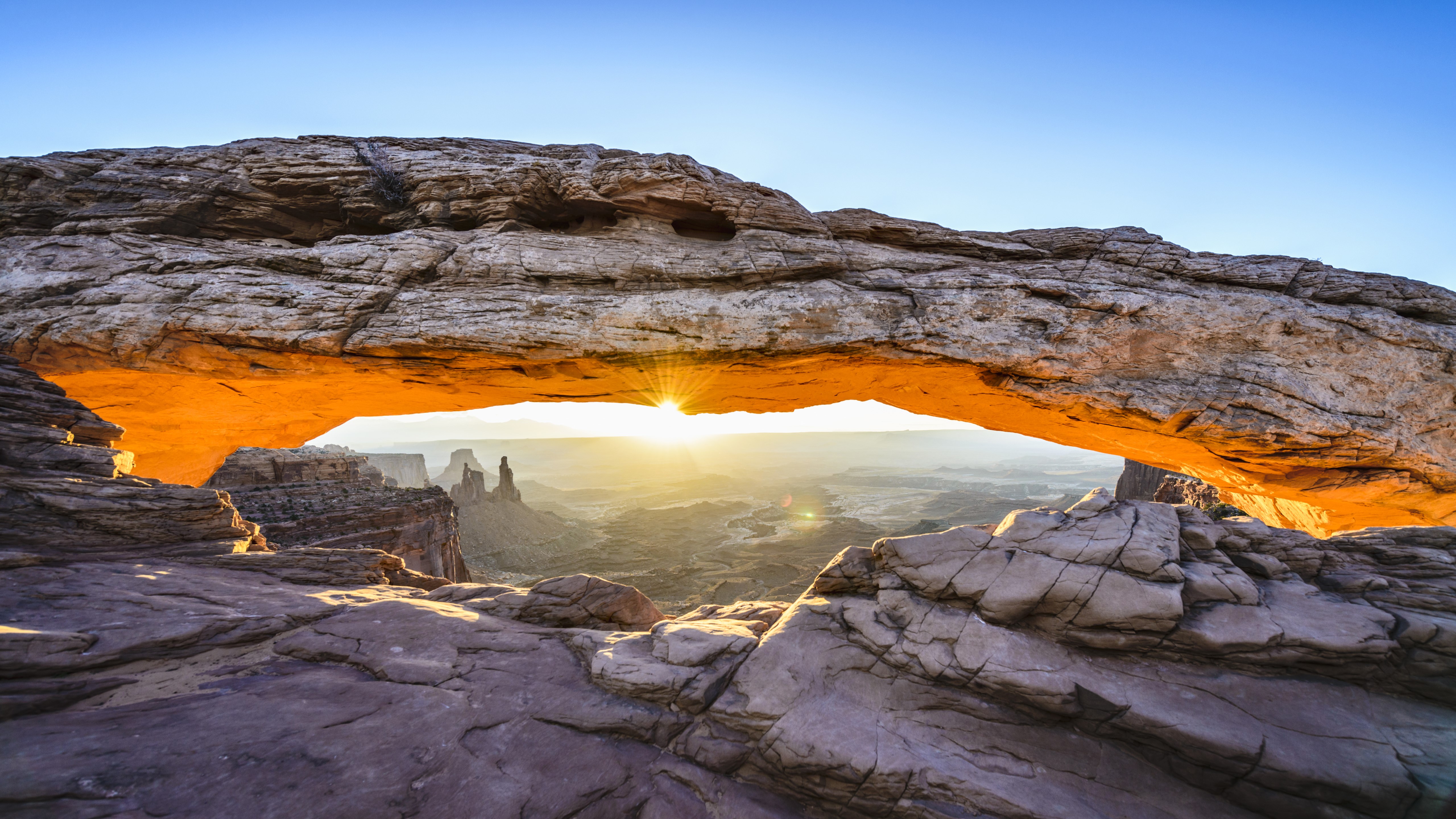Mesa Arch is one of the most spectacular spots in Canyonlands National Park – and tourists are climbing all over it
The arch is extremely popular with photographers, but beware the sheer cliff on the other side

A pair of hikers have been caught climbing on the spectacular Mesa Arch at Canyonlands National Park, just meters from a sign explicitly warning visitors to stay off.
The incident was recorded by military veteran and photographer Cameron Knudsen, who panned from the sign to the hikers and tried calling out to them, to no avail. Knudsen's video (which you can watch below) was shared by Instagram account TouronsOfNationalParks, which calls out examples of bad behavior at sites of natural beauty, including people dipping their fingers in hot springs, climbing on waterfalls with their children, and poking wild animals.
A post shared by @touronsofnationalparks
A photo posted by on
Mesa Arch is a pothole arch, which formed when a small depression on top of the rock mass merged with an alcove on the cliff face. It's of the most photographed arches in southeastern Utah, and huge groups of 50 photographers or more often gather at dawn to capture the moment the first glow of sunlight appears at the bottom.
The arch is 27ft long, and of the canyon far below and the La Sal Mountains in the distance. It's accessible via a short, easy hike that's suitable for families and children, but despite the shallow angle of ascent, climbing the arch is extremely dangerous due to the 1,200ft sheer drop on the other side.
Straying off established trails elsewhere in the park risks damaging the delicate ecosystem at Canyonlands. The National Park Service (NPS) explains that much of the park's undeveloped land is covered in a living biological soil crust containing lichen, mosses, algae, microfungi, and bacteria.
When wet, the cyanobacteria (blue green algae) in the crust move through the soil, leaving behind an intricate web of sticky fibers. These hold the soil together and allow it to retain moisture, in time creating an environment where other plants and organisms grow.
"Help us protect this fragile, but crucial, life by remaining on designated roads, routes, and trails at all times," says the NPS. "Where hiking trails are not established, hike in sandy washes or on bare rock."
Advnture Newsletter
All the latest inspiration, tips and guides to help you plan your next Advnture!
- Best hiking boots: tested and rated on tough terrain

Cat is Homes Editor at TechRadar and former editor of Advnture. She's been a journalist for 15 years, and cut her teeth on magazines before moving online. She helps readers choose the right tech for their home, get the best deals, and do more with their new devices.
